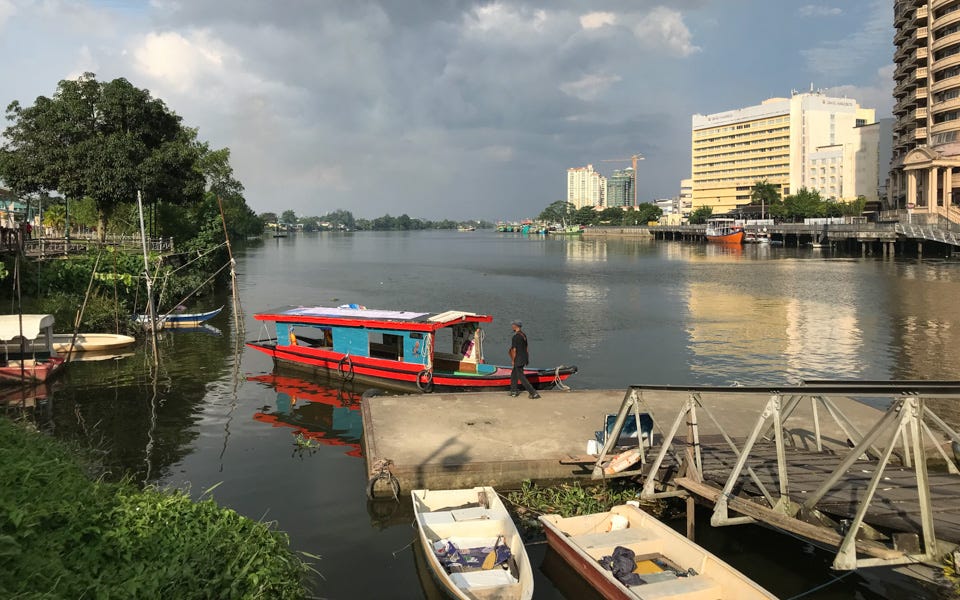Jason Brooke: "Certainly, I would consider the Brookes Sarawakian"
Q&A: From a descendant of the White Rajahs: a Bornean tale for Hollywood, finding identity and opportunity in a family legacy, and grappling with history in a post-colonial world.
A tangled history
I’m writing to you, again, from home. Malaysia is ostensibly still under “lockdown” until August 31, but a very relaxed one—a loosening that began in several phases in late April, with most economic sectors having resumed operations. Where I used to leave the house only to buy groceries, I’ve since been out to cafes and restaurants with friends and family. And—good news!—there are now fewer than a hundred active cases in Malaysia. We still can’t leave the country until the Movement Control Order (MCO) is lifted, but interstate travel has been green-lit, and I’ve been thinking about a road trip…
But I digress. In a previous letter, I said I would share a conversation I had with Jason Brooke, a sixth-generation descendent of Sarawak’s “White Rajahs”—a British family dynasty that ruled the territory from 1841 and then ceded it to Britain after World War Two in 1946—for the South China Morning Post. And now is particularly good timing, with debate firing up around the world about the memorialization of historical figures, and the Hollywood biopic about his ancestor James Brooke due to debut at Cannes. In particular, I was interested in what he said about how Sarawak has shaped him.
So, in this letter, I’m returning to Kuching—the capital of the state of Sarawak (which became part of Malaysia in 1963), wended through by a broad river with colorful boat taxis, home to incredibly diverse indigenous cultures and consequently great food. People visiting Malaysia don’t often have Sarawak on their list, and you should if you decide to come when it’s safe to travel again.
I visited Kuching only for the first time two years ago—at least, I think so. I was told that my grandparents might have brought me with them when they attended a gathering of Hainanese in the nineties, but that’s likely an imagined memory. In 2018, I made a trip with a friend for the Rainforest Fringe Festival and the coinciding Rainforest World Music Festival—you can see how much silly fun we had on my Instagram highlights.
After my friend left, I stayed a few more days in Kuching on my own and visited the Brooke Gallery at Fort Margherita. At the time, I had been working as a researcher on a documentary about the Brookes’ century-long rule over Sarawak. The documentary would eventually be broadcast on National Geographic Asia, but I also wanted to write about the comeback the Brooke story seemed to be making in Sarawak and how that jived with local understanding. I pitched it to a fair few publications unsuccessfully and was about ready to give it up, but SCMP said yes, and I finally got to write the story—though not in the detail I wanted to. I hardly ever get to write in the detail I want to.
The thing is, the history of the Brookes is rather convoluted. Much of the early defining historical accounts were apparently sourced from the Brookes themselves, while more critical and contradictory accounts by later historians exist. Because of this, it can sometimes be difficult to state a fact categorically, without qualification. It’s also difficult to characterize the Brookes’ reign as a whole, considering the three rajahs—James Brooke, Charles Brooke, and Charles Vyner Brooke—and the last rajah muda (crown prince) Anthony Brooke had different personalities and different ambitions for Sarawak, and different ideas on how to rule it, which led to inter-generational feuds. Consequently, I found it tricky to weave a basic summary for my short SCMP story that also covered enough critical ground, but hope I still managed a fair job of it.
Here’s a transcript of my conversation with Jason Brooke, done over a call in December last year, condensed and edited for clarity. I’ve also included some further insights from James Chin, a Sarawakian historian whose candor I always appreciate in a country where most tend to mince words. Anyway, best to read my published article first before continuing, and please note that the text in grey boxes contain my comments and clarifications.
Anyway, I hope you find the Brooke story interesting. It’s certainly complicated.
The Q&A
Emily Ding: When did you first become aware of your family’s history?
Jason Brooke: I’ve been interested in the Sarawak part of my family’s history for as long as I can remember. When I was growing up, we had Bornean artifacts, swords and shields, Sarawak flags, and the like around our house. I asked my father to tell me about them, but I think it was a difficult topic for him because he would have been the rajah if things had gone differently, and if the British hadn’t taken over Sarawak as a colony after the Second World War. So he had a feeling—maybe a kind of lost inheritance, a lost feeling of purpose—that troubled him throughout his life. He encouraged my interest in Sarawak, but he didn’t himself engage with it.
But I had a relationship with my grandfather, Anthony Brooke, who had been the rajah muda before the War. He was living in New Zealand, and he very much encouraged my interest. So I kept reading and collecting and studying, but from a distance, through my teens. Then I finally asked my grandfather if he would take me to Sarawak to see the place for myself—and he asked me, would I please wait until I was mature enough to appreciate what Sarawak meant to my family on a spiritual level?




